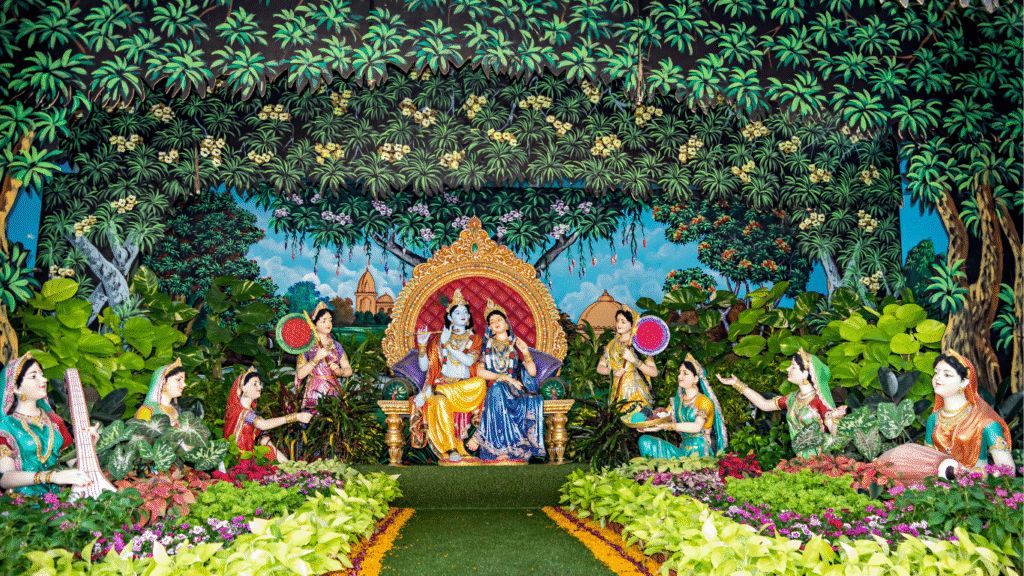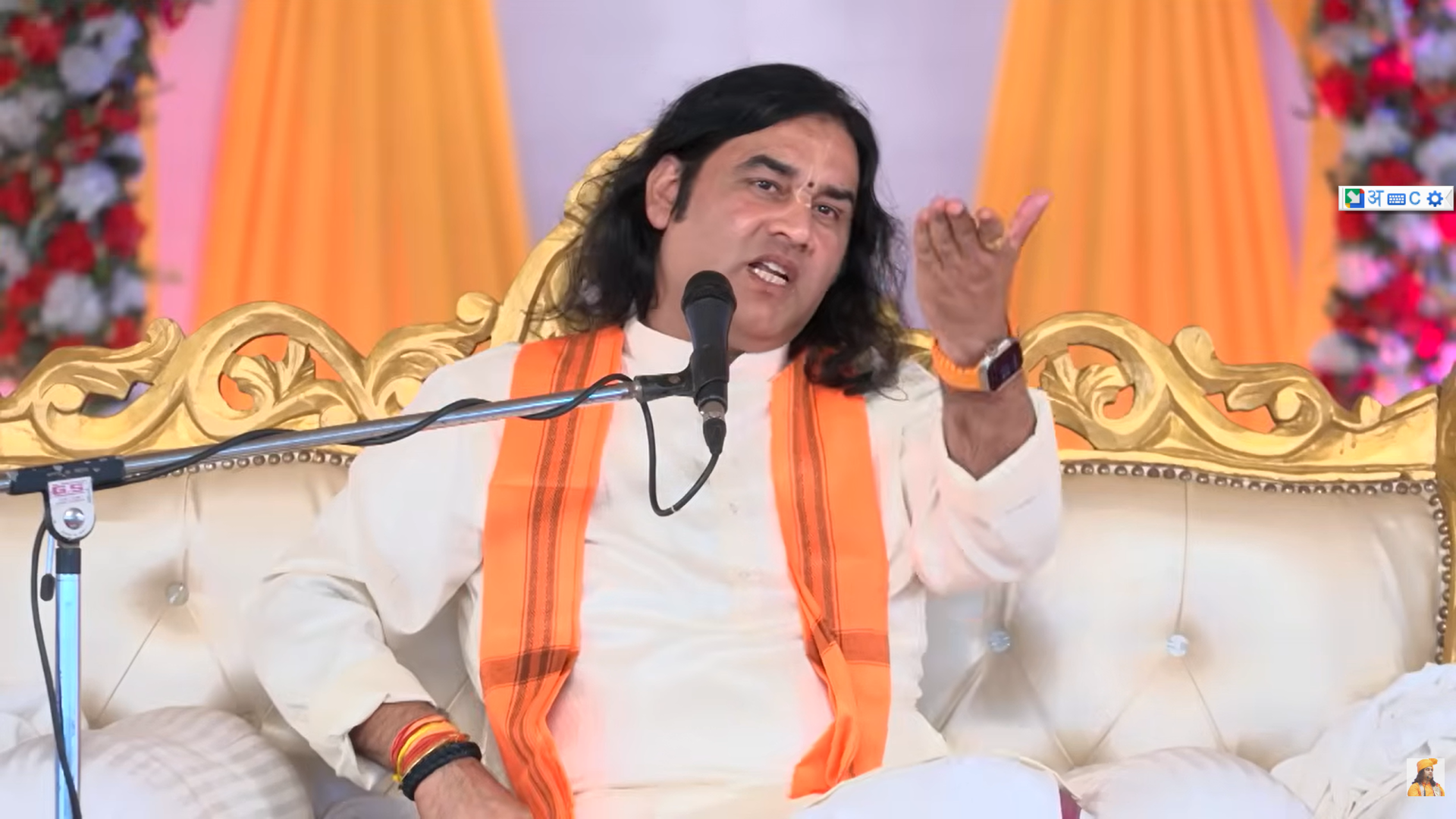
#NoOnionNoGarlic #IndianCuisine #ReligiousFood #SattvicFood #JainFood #VaishnoDevi #PureVegetarian #SpiritualDiet #NoGarlicNoOnion #SacredCuisine
हिंदी में का आर्टिकल
कहाँ मिलता है बिना लहसुन-प्याज वाला भोजन?
भारत विविधता से भरा देश है। यहाँ की विविध संस्कृति, आहार-आचार और धार्मिक मान्यताएँ सदियों से चली आ रही हैं। इन्हीं परंपराओं में एक अनूठा स्थान है- बिना लहसुन-प्याज के भोजन का। ऐसे अनेक स्थान और समुदाय हैं जहाँ इन मसालों के बिना ही स्वादिष्ट भोजन परोसा जाता है। चलिए विस्तार से जानते हैं कि ऐसे भोजन कहाँ और क्यों नहीं मिलता, और इसके पीछे की परंपराएँ क्या हैं।
कटरा, जम्मू — दुनिया में सबसे अनोखा शहर
कटरा, जम्मू-कश्मीर के रियासी जिले में स्थित है और वैष्णो देवी यात्रा का प्रमुख पड़ाव है। यहाँ प्याज और लहसुन का सेवन पूरी तरह वर्जित है। सड़कों से लेकर होटल-रेस्तरां तक, किसी भी दुकान में आपको प्याज-लहसुन नजर नहीं आएंगे। यहाँ के खाद्य बाजार, होटल, ढाबे, सभी जगह प्याज और लहसुन बैन है। इस क्षेत्र की धार्मिकता को शुद्ध बनाए रखने के उद्देश्य से यह अनोखा नियम है। यहाँ आने वाले लाखों तीर्थयात्री भी शुद्ध सात्विक भोजन का ही अनुभव करते हैं। स्थानीय लोग भी इस परंपरा को पूरी निष्ठा से मानते हैं, और नया स्वाद रचते हैं।
धार्मिक स्थलों पर सात्विक भोजन
कटरा के अतिरिक्त, देशभर के कई मंदिर इलाकों में लहसुन-प्याज रहित भोजन ही मिलता है। उत्तर भारत के प्रमुख तीर्थ स्थलों जैसे हरिद्वार, ऋषिकेश, वृन्दावन, पुष्कर, उज्जैन, द्वारका, तिरुपति, पांडिचेरी आदि में भी मंदिर के आसपास के भोजनालयों में सात्विक भोजन ही दिया जाता है। यहाँ सात्विकता बनाए रखने हेतु ये मसाले वर्जित माने जाते हैं।
जैन समाज और ‘जैन फूड’
जैन धर्म के अनुयायियों का आहार नियम बहुत सख्त है। जैन लोग लहसुन, प्याज सहित अन्य भूमिगत सब्जियाँ भी नहीं खाते। उनके अनुसार ऐसी चीज़ों का खाना अहिंसा और आत्मसंयम के सिद्धांतों के विरुद्ध है। देशभर के बड़े शहरों में ‘जैन रेस्टोरेंट’, ‘व्रत भोजनालय’, ‘पंडित जी की रसोई’ जैसी जगहें आपको बिना लहसुन-प्याज का स्वादिष्ट भोजन देती हैं। यहाँ शाक, दाल, सब्ज़ी, हलवा, पूरी, कढ़ी आदि कई व्यंजन मिलते हैं जो पूरे स्वाद के साथ शुद्धता भी बरकरार रखते हैं5।
त्योहार, पूजा और उपवास का भोजन
हिंदू धर्म में विशेष त्योहारों, व्रत-उपवास और पूजा के समय विशेष तौर पर बिना लहसुन-प्याज का भोजन तैयार किया जाता है। दरअसल, पूजा में चढ़ाई जाने वाली थाली में कोई भी तामसिक/राजसिक पदार्थ वर्जित रहता है। ऐसे में आलू, लौकी, तोरई, पनीर, चना, खीर, हलवा, फल, दूध आदि पदार्थ प्रयोग किए जाते हैं।
वैष्णव, ब्राह्मण, स्वामीनारायण परंपरा
कई वैष्णव और ब्राह्मण समुदाय सात्विकता के कारण रोजमर्रा के जीवन में भी प्याज-लहसुन से परहेज करते हैं। विशेषतः पूजा, घर के भोग अथवा शाम के भोजन में इन मसालों का प्रयोग नहीं होता। तमिल, गुजराती, मारवाड़ी, कर्नाटक, यूपी, बिहार आदि के कुछ इलाके इस परंपरा में अग्रणी हैं। स्वामीनारायण संप्रदाय और कुछ वैष्णव मठों में भी यही नियम प्रमुखता से माना जाता है।
धार्मिक कथा, आयुर्वेद व पौराणिक प्रसंग
प्याज-लहसुन की अनुपस्थिति को लेकर धार्मिक ग्रन्थों में विविध उल्लेख हैं। उदाहरण, मनु स्मृति और पुराणों में इन्हें तामसिक यानी मन-मस्तिष्क को अशांत, अव्यवस्थित करने वाला पदार्थ कहा गया है। आयुर्वेद कहता है कि यह तेज़ गंध, तिक्त-पचने में भारी तथा ऊर्जा को भटकाने वाला महत्त्व रखता है, जिसकी वजह से साधक, योगी, ब्राह्मण आदि इनसे परहेज करते हैं।
होटल/रेस्टोरेंट और आज का रुझान
आजकल बड़े शहरों और टूरिस्ट प्लेसेस के रेस्टोरेंट भी ग्राहक की डिमांड पर बिना प्याज-लहसुन के स्पेशल थाली, सब्ज़ी, स्नैक्स व खाने के आयोजन करते हैं। कई राष्ट्रीय ब्रांड जैसे सरवणा भवन, हल्दीराम, बिकानेरवाला, इस्कॉन रेस्टोरेंट्स, बड़ामल्हार सहित कई होटल नव्रात्रि, व्रत, उपवास के मौसम में नो-ऑनियन-नो-गार्लिक मेन्यू प्रस्तुत करते हैं। ऑनलाइन फूड पोर्टल्स पर ‘जैन फूड’ या ‘नो ऑनियन गार्लिक’ सेक्शन भी उपलब्ध हैं।
संस्कृति में चलने वाली मान्यताएँ
भारत के कई स्थानों और समाज में प्याज-लहसुन को तामसिक, हानिकारक या अशुद्ध समझा जाता है। कई मान्यताएँ हैं- जैसे, देवी-देवता को इनकी गंध पसंद नहीं, सात्विकता भंग होती है, पूजा-उपवास में मानसिक और आत्मिक शुद्धता बनी रहती है।
ग्रामीण उदाहरण : मिरगपुर (सहारनपुर), संकरी (उत्तराखंड)
भारत के कुछ गांवों में सदियों से लहसुन-प्याज नहीं उपयोग किया जाता। उत्तर प्रदेश के सहारनपुर जिले के मिरगपुर और उत्तराखंड के संकरी गाँव जैसे उदाहरण हैं, जहाँ पूरे गाँव ने इन्हें वर्जित किया है। नई पीढ़ी भी इस परंपरा को आत्मसात करती है, जिससे यह विरासत आगे बढ़ती है।
विदेशी भारतीय मंदिर व सामुदायिक भोजनालय
न केवल भारत में, बल्कि विदेशों में भी भारतीय मठ और मंदिरों में प्याज-लहसुन से रहित सात्विक भोजन बनता है। ISKCON, स्वामीनारायण मंदिर, जैन मंदिर अमेरिका, यूके, ऑस्ट्रेलिया, अफ्रीका आदि में भी इसी नियम का पालन किया जाता है।
बिना प्याज-लहसुन के लोकप्रिय डिशेज़
-
सात्विक थाली
-
शाक सब्जियाँ
-
आलू टमाटर, मटर पनीर (बिना प्याज-लहसुन)
-
कढ़ी, पूड़ी, छाछ
-
दाल तड़का (हींग, अदरक, टमाटर से)
-
फलाहारी स्नैक्स
यात्रियों के लिए सुझाव
अगर आप बिना प्याज-लहसुन वाला खाना ढूंढ रहे हैं, तो:
-
‘जैन फूड’, ‘सात्विक’, ‘वैष्णव भोजनालय’, ‘पंडित ढाबा’ जैसी जगहों की तलाश करें।
-
ऑनलाइन फूड डिलीवरी पर ‘No Onion No Garlic’ फिल्टर का उपयोग करें।
-
धार्मिक व पवित्र स्थलों के पास नौ-ऑनियन-गार्लिक रेस्टोरेंट आमतौर पर सहज मिल जाते हैं।
निष्कर्ष
भारतभूमि में लहसुन-प्याज रहित भोजन केवल खान-पान तक सीमित नहीं है, यह जीवनशैली, श्रद्धा और संस्कृति का हिस्सा है। चाहे धार्मिक स्थल हो, जैन समाज हो, व्रत या त्योहार हों—ये परंपरा आज भी जीवंत और महत्वपूर्ण बनी हुई है। शहरों के साथ-साथ गाँवों, होटलों और मंदिरों में भी यह धारा आज की व्यस्त दौड़ में भी कायम है।
वृंदावन में नो-ऑनियन नो-गार्लिक भोजन और संस्कृति
Vrindavan: The Hub of No Onion No Garlic Cuisine & Culture
हिंदी विवरण
वृंदावन—उत्तर भारत का प्रमुख तीर्थस्थान—अपने सात्विक, शुद्ध और नो-ऑनियन नो-गार्लिक (बिना लहसुन-प्याज) भोजन एवं जीवनशैली के लिए प्रसिद्ध है। यहाँ के अधिकांश होटल, रेस्टोरेंट, भोजनालय और आश्रम पूर्ण सात्विक आहार ही परोसते हैं। मंदिरों, भंडारों और स्ट्रीट फूड आउटलेट्स में प्याज-लहसुन का प्रयोग सख़्ती से वर्जित है, क्योंकि यह कृष्ण-भक्ति, पूजा, सेवा और सांस्कृतिक शुद्धता की परंपरा का हिस्सा है।
-
यहाँ के अधिकांश निवासी—चाहे वे ब्रजवासी मूल के हों या संत, साधु, या मंदिरों से जुड़े—अपने रोज़मर्रा के भोजन में लहसुन-प्याज का प्रयोग नहीं करते।
-
जैन भोजन, वैष्णव भोजनालय, सात्विक कैफे, आश्रम की रसोई और होटल—सभी जगह शुद्ध सात्विक खाद्य की भरपूर सुविधा है।
-
प्रसाद, मठभोजन, महाप्रसाद आदि भी पूरी तरह शुद्ध, ताजा और सात्विक होते हैं।
आम जलवायु और खाद्य संस्कृति:
-
वृंदावन के बाजार, होटल, गली-चौराहे, आश्रम एवं भजन मंडलियाँ भी इसी परंपरा का सम्मान करती हैं।
-
स्पेशलिटी: कचौड़ी, पूड़ी-सब्ज़ी, दाल-चावल समित हर व्यंजन —सब बगैर लहसुन-प्याज के ही बनते हैं।
English Overview
Vrindavan is renowned across India as a spiritual town where “No Onion, No Garlic” food is not just common but a cultural norm. Nearly all hotels, restaurants, guest houses, ashrams, and street food vendors in Vrindavan offer strictly “Sattvic” meals—pure vegetarian dishes completely free of onions and garlic.
-
Most local residents—devotees, priests, ashramites, and the Brij community—do not consume onion and garlic in their daily diets.
-
All major eateries, temple canteens, and even city food stalls uphold this tradition, serving delightful and pure vegetarian fare as per ancient Vaishnav and Krishna Bhakti practices.
-
Prasadam, special feast foods, and daily restaurant menus are thus made according to sattvic principles—fresh, wholesome, and onion-garlic free.
Food Highlights and Local Scene:
-
Vrindavan’s streets, local markets, and accommodation kitchens honor and promote this sattvic tradition.
-
You will enjoy dishes like puri-sabzi, special dal, kachori, khichdi, lassi, and sweets—all authentically cooked without onion-garlic.
प्रमुख बिंदु / Key Features
-
हर जगह मिलता है शुद्ध सात्विक भोजन—मंदिर क्षेत्र, होटल, आश्रम, गेस्ट हाउस सभी जगह
-
निवासियों की आदत: अधिकतर स्थानीय लोग इस प्रकार के भोजन को ही वरीयता देते हैं
-
आगंतुकों के लिए सुविधाजनक: किसी भी नुक्कड़, होटल, कैफे या मंदिर के पास स्वादिष्ट व पौष्टिक नो-ऑनियन नो-गार्लिक खाना सहज उपलब्ध
संक्षिप्त निष्कर्ष | Quick Summary:
वृंदावन में शुद्धता और सात्विकता के आदर्श सर्वोपरि हैं, इसलिए यहाँ नो-ऑनियन नो-गार्लिक भोजन वाली संस्कृति का बड़े गर्व से पालन होता है—यहाँ के अधिकतर निवासी भी इसका पूरा पालन करते हैं, और यात्रियों/भक्तों के लिए भी बिना किसी परेशानी के ऐसा भोजन उपलब्ध है।In Vrindavan, the tradition of sattvic, no-onion no-garlic food is a well-cherished lifestyle, strongly embraced by most of its residents and warmly extended to visitors and pilgrims alike.
English Article (3000 Words)
Where Onion-Garlic Based Food is Not Served in India: Culture, Traditions & the Sattvic Diet
India’s culinary tapestry is rich and varied, deeply entwined with ancient traditions, diverse religions, and philosophies. Among its unique food customs, one stands out for its spiritual and cultural depth: the avoidance of onion and garlic in daily meals and temple cuisine. This is not just a dietary preference, but a spiritual principle practiced across India and its diaspora. Let us explore the places, communities, and philosophies where food with onion and garlic is not found, and understand the reasons behind these traditions.
Katra, Jammu—The Only Onion-Garlic-Free City
Katra, situated in Jammu and Kashmir, holds a unique distinction in India’s culinary map. As the gateway to the sacred Vaishno Devi temple, the entire town upholds a strict ban on onions and garlic—not just out of custom, but by regulation. You won’t find these ingredients in local markets, hotels, street food stalls, or even vegetable markets. The ban is rooted in maintaining spiritual sanctity for millions of pilgrims visiting the shrine. Local residents, hoteliers, vendors, and visiting devotees alike adhere to this tradition, making Katra a rare city where not a single dish contains onion or garlic.
Spiritual Centers & Temple Zones
Apart from Katra, several temple towns across India, including Haridwar, Rishikesh, Vrindavan, Pushkar, Ujjain, Dwarka, Tirupati, and more, serve only Sattvic (pure) food—free from onions, garlic, and other tamsic (agitative) or rajasik (overstimulating) ingredients. In temple premises, food is prepared and distributed in strict accordance with these guidelines. Whether it is the langar at Sikh gurdwaras or prasad at Hindu temples, onion and garlic are avoided as they are believed to disturb the mind’s clarity and spiritual focus.
Jain Community & Jain Food
The Jain community is renowned for its disciplined and non-violent (ahimsa) approach to food. Jains do not consume onion, garlic, or even most underground roots and tubers, believing that these substances harm tiny life forms in the soil and stimulate unnecessary desires. Across major Indian metro cities, “Jain Restaurant,” “Pandit Bhojanalaya,” and “Upvas Food” brands cater to this need, offering a menu full of flavor—dal, sabzi, halwa, poori, and more—without a trace of onion or garlic.
Festivals, Fasts & Ritual Meals
Hindu festivals and fasting periods see the widespread adoption of no onion-no garlic meals. Food offered during Navaratri, Maha Shivratri, Janmashtami, and other holy days is ‘sattvic’—cooked without onions, garlic, or any ingredients considered impure or agitating to the mind and senses. Popular festival fare includes boiled potatoes, pumpkin, paneer dishes, rajgira thalipeeth, kuttu puri, fruit salads, and various milk-based sweets.
Vaishnav, Brahmin, Swaminarayan Traditions
Many followers of Lord Vishnu, especially in communities from Gujarat, Rajasthan, parts of Karnataka, Tamil Nadu, Uttar Pradesh, and Bihar, maintain a Sattvic diet, excluding onions and garlic not only during rituals but also in daily meals. The Swaminarayan Sampradaya, Gaudiya Vaishnavas, and certain Brahmin families continue this tradition, rooted in the notion that pure food supports a pure mind and heart necessary for spiritual practice.
Scriptural, Ayurvedic & Mythological Perspectives
Hindu scriptures such as the Manusmriti include onions and garlic among foods to be avoided by twice-born (dvija) classes. Ayurveda, India’s ancient system of wellness, considers them rajasic and tamasic—stimulating, heating, and clouding the mind. They are believed to arouse base passions and distract from higher states of meditation, focus, and tranquility. Mythological tales even link the origins of onion and garlic to ancient legends, adding spiritual weight to these customs.
Modern Day: Restaurants & Urban Trends
While traditional homes have followed Sattvic norms for centuries, today, urban restaurants—including leading national chains like Saravana Bhavan, Haldiram’s, Bikanervala, Iskcon restaurants—offer “no onion, no garlic” meal options, especially during festival seasons. In cities such as Delhi, Mumbai, Bangalore, and Chennai, Jain food can be ordered online, and eateries highlight “Jain” and “Sattvic” sections on their menus as well as on food delivery apps.
Cultural Beliefs & Continuity
For many families and communities, abstaining from onion and garlic extends beyond religious mandates—it’s part of their cultural identity. They believe that such foods disturb mental stability, spiritual purity, and even social harmony. Some attribute their avoidance to reverence for their ancient customs, others to the belief that onion and garlic are inherently impure or energizing in a negative way.
Villages That Abstain: Mirgpur (Saharanpur), Sankri (Uttarakhand)
In some Indian villages, like Mirgpur in Uttar Pradesh and Sankri in Uttarakhand, centuries-old customs prohibit the use or even sale of onion and garlic. Families pass on these rules from one generation to the next, and the entire community, young and old, maintains this shared tradition, creating a distinctive local food culture.
Temples and Indian Communities Abroad
This practice extends beyond India, as temples and Indian communities across the world uphold the Sattvic diet. ISKCON temples and Swaminarayan mandirs in the US, UK, Australia, and Africa serve only pure vegetarian meals without onion or garlic—a practice embraced by global devotees and visitors.
Famous No Onion-Garlic Dishes
-
Sattvic thali (multi-dish pure vegetarian platter)
-
Jain-style sabzi and dal
-
Aloo tamatar, matar paneer (without onion-garlic)
-
Kadhi, poori, chaas (buttermilk)
-
Dal tadka (tempered with hing, ginger, and tomatoes)
-
Falahari cuisine (for fasts and festivals)
Tips for Travelers and Pilgrims
If you’re seeking no onion-no garlic meals while traveling in India:
-
Look for ‘Jain Food’, ‘Sattvic’, or ‘Vaishnav Bhojanalaya’ signboards.
-
Use food delivery apps that filter ‘No Onion No Garlic’ options.
-
Around major temples and pilgrimage centers, no onion-garlic food is almost always available.
The Larger Significance
The avoidance of onion and garlic in Indian food isn’t merely an act of abstinence; it underlines a worldview that places purity, self-control, and spiritual aspiration at the heart of life. The persistence of this custom across centuries and geographies speaks to its deep roots and continuing relevance in contemporary society.
With this, the journey through India’s onion-garlic abstaining food culture comes to an end—one that unites faith, philosophy, and flavor, showing how even “less” can sometimes mean “more,” in taste as well as spirit.









